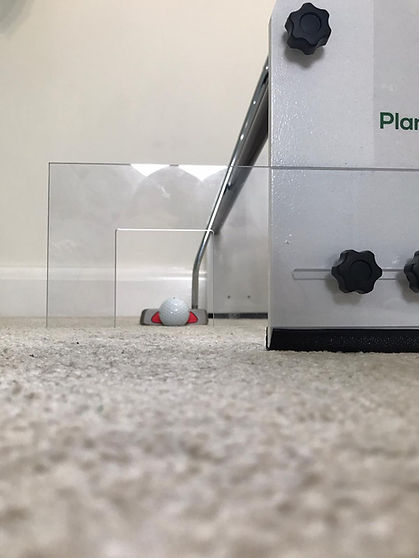Discover your degree
Whether it is a dedicated 1 hour practice session, or a quick 5 minutes whilst your playing partner is putting their shoes on, your putting practice needs to focus on areas that will improve your game the most. From my experience golfers barely pay any importance to how long a putt is and just eyeball distance rather than quantifying the distance. Would you set off on a car journey not knowing how far the journey was and not knowing how much petrol you had? This is in effect how we are putting if we do not try to quantify the distance and stick to the inconsistent method of eyeballing distance. How can you know how hard to hit a putt if you don’t know how far it is?
When practicing I would encourage you to guess the distance of the putt in your head and see how many strides it takes you to reach the hole. By practicing this you will start to understand distance. From here you will start to be able to calibrate speed/distance control (I will cover these issues more in a later article).

Now that you have started measuring the distance of your putts, - what length of putts should you be practicing? In his book Every Shot Counts, Mark Broadie (2014) introduces the concept of 'Strokes Gained' to help us answer this question. Just in case you aren’t aware, 'Strokes Gained' measures how successful someone is compared to the average. Broadie used this concept to conclude that the range of 3ft to 7ft separates good and bad putters. For amateur golfers, this range of putts accounts for 46% of total stroked lost compared to the average.
I would encourage you to practice a variety putts, from different lengths and slope directions. Make sure you vary your practice a lot, hitting different length of putt, different angles, randomise where you are on the green by just throwing the ball somewhere rather than working from hole number 1 - 9. On longer putts (over 20ft) focus more on distance control than whether you hole it (making sure you measure the length of the putt first!!!). However, given Broadie’s findings short putts should play a vital role in any practice your do.
The Plane Face Putting Aid’s ball gate has been designed to help you hole more putts in this critical 3-7 ft range. Depending on how fast the ball is travelling when it reaches the hole, you have around 1 degree of error on an 8ft putt. We have designed the width of the ball gate to be at this 1 degree margin of error. If your putter shaft stays on the rails and the ball goes through the gate your accuracy, your putt should always be within this 1 degree tolerance. Vary the length and slope direction that you hit putts when using the training aid but be safe in the knowledge that every time your ball goes through the gate you have helped groove a putting stroke that will improve your putting in the most crucial area.
Click Here to learn more about the our putting aid
References
Broadie, M. (2014) Every Shot Counts, Penguine Group, New York (USA).
